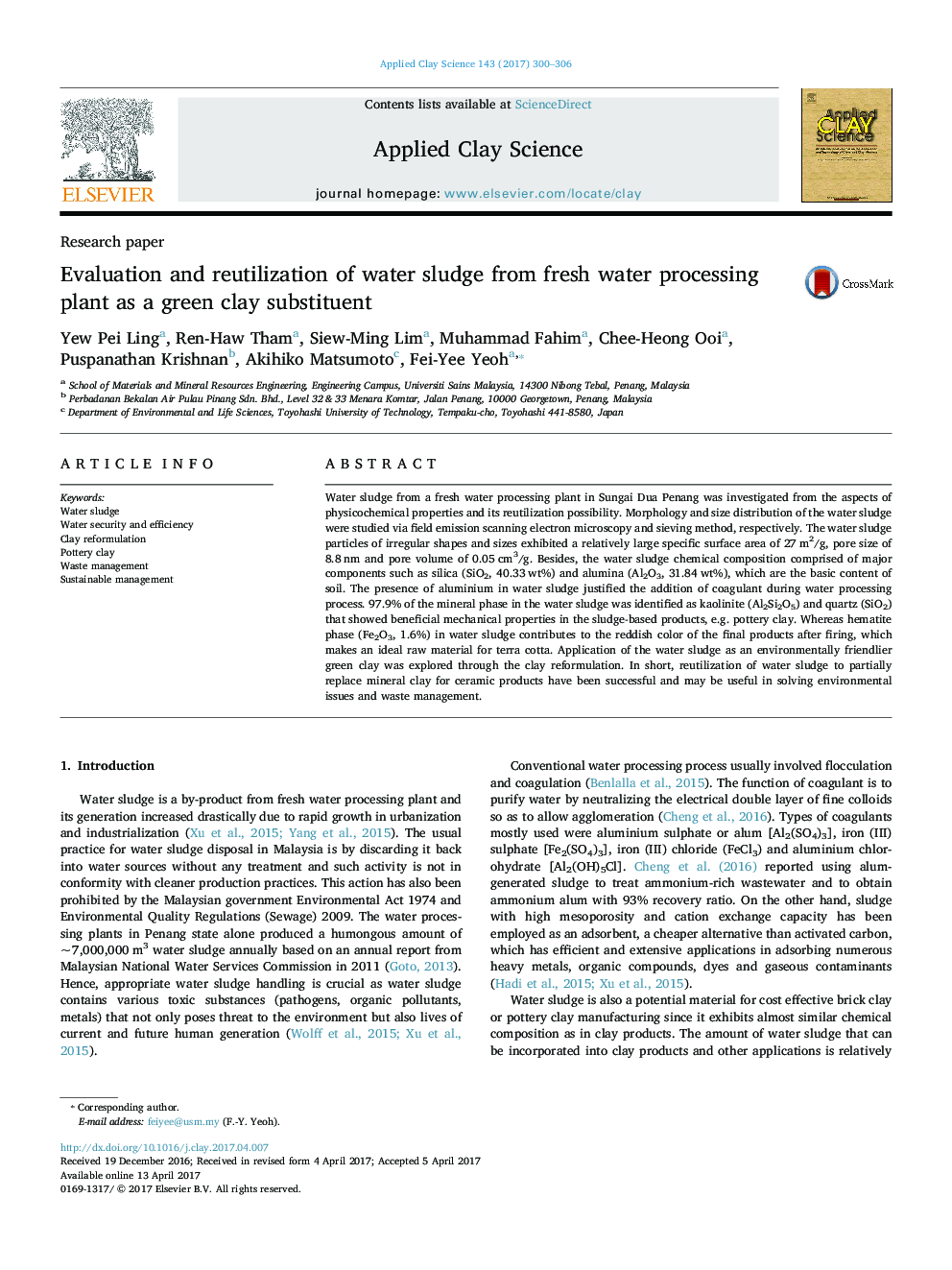| Article ID | Journal | Published Year | Pages | File Type |
|---|---|---|---|---|
| 5468925 | Applied Clay Science | 2017 | 7 Pages |
Abstract
Water sludge from a fresh water processing plant in Sungai Dua Penang was investigated from the aspects of physicochemical properties and its reutilization possibility. Morphology and size distribution of the water sludge were studied via field emission scanning electron microscopy and sieving method, respectively. The water sludge particles of irregular shapes and sizes exhibited a relatively large specific surface area of 27Â m2/g, pore size of 8.8Â nm and pore volume of 0.05Â cm3/g. Besides, the water sludge chemical composition comprised of major components such as silica (SiO2, 40.33Â wt%) and alumina (Al2O3, 31.84Â wt%), which are the basic content of soil. The presence of aluminium in water sludge justified the addition of coagulant during water processing process. 97.9% of the mineral phase in the water sludge was identified as kaolinite (Al2Si2O5) and quartz (SiO2) that showed beneficial mechanical properties in the sludge-based products, e.g. pottery clay. Whereas hematite phase (Fe2O3, 1.6%) in water sludge contributes to the reddish color of the final products after firing, which makes an ideal raw material for terra cotta. Application of the water sludge as an environmentally friendlier green clay was explored through the clay reformulation. In short, reutilization of water sludge to partially replace mineral clay for ceramic products have been successful and may be useful in solving environmental issues and waste management.
Related Topics
Physical Sciences and Engineering
Earth and Planetary Sciences
Geochemistry and Petrology
Authors
Yew Pei Ling, Ren-Haw Tham, Siew-Ming Lim, Muhammad Fahim, Chee-Heong Ooi, Puspanathan Krishnan, Akihiko Matsumoto, Fei-Yee Yeoh,
